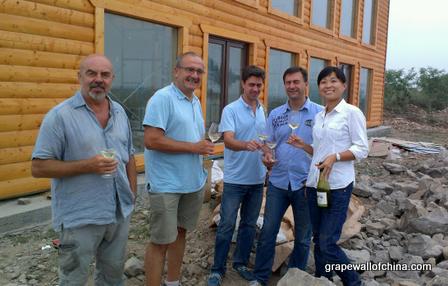
~
We’re sipping beer on rickety stools under a makeshift tent in front of a kebab joint at midnight in Laixi — population 700,000: a modest number by China standards — as the vineyard manager from nearby Great River Hill explains how he forked over a hefty rmb2500 to save a donkey from becoming burgers at a local eatery. The restaurant owner pegged the price so high because he said the donkey was male and thus heavier. The manager’s inspection suggested the opposite sex, an observation the owner did not let go unchallenged. “Guy said, ‘Donkey’s too young. No balls’.”
Whatever the case, a few more beers and ten hours later we are at the vineyard, in Shandong province, and see the donkey, Jose, hanging out near the Cabernet and doing its part by providing free fertilizer. Jose is part of the vineyard “zoo“ that includes a bunch of pigeons, several dogs and a big carp, the only one of 20 left after nearby villagers apparently came with electric prods and cleared the pond.
I mention all this because the typical winery I visit in China is nothing like this. Those visits usually involve a quick walk around some fancy grounds before heading into a vast marble-floored “chateau” with sprawling cellars, sanitized classrooms and large shops full of expensive — and usually over-priced — wine. Those places are meant to evoke a lifestyle, I suppose, and typically have more the atmosphere of a shopping mall.
You could say Great River Hill is more “real”. The donkey, the pigeons and the goats. (Did I mention the goats? There are nine of them, and they do roam, munching grass along the way.) The mix of tractors old and new, the highlight being a Lamborghini complete with air-conditioning (see below). The modest clubhouse and cellar under construction. And the low-budget nursery with some 180,000 cuttings. The focus here is on the vineyard — not on whether to add more gold leaf to the atrium ceiling or a hundred additional showcase barrels to the cellar — and if a few stray animals are part of the scenery, so be it.
Great River Hill is a relative loner in these inland parts far from the traditional wine-producing powerhouse of Penglai on the coast. Vine planting started here in 2008 after, I’m told, the rockier portions were pulverized by dynamite and then topped with soil. Two-thirds of the 100 hectares allocated for vineyards is planted and, when all is said and done, the mix is expected to be 10 percent white, namely Chardonnay, and 90 percent red, split 70 percent Cabernet Sauvignon, 10 percent each Merlot and Petite Syrah and 5 percent each Cabernet Gernischt and Syrah.
The site provides good drainage, important as it saw over 500 millimeters of rain in July alone. Consultant and winemaker Marc Dworkin compares it to Medoc — except for that summer rain. Senior management includes GM Maros Breda and land manager Sidney Blazek from Czech, sales director David Kempf, who like Dworkin is from France, and production director Yanan Hao from China, the youngest of the crew and a graduate of China Agricultural University. The key investor behind the project is Karl Hauptmann, who also has other wine projects, including in Germany and Bulgaria, where Dworkin is also involved.
Great River Hill has its challenges. Everything from row posts to vines to the aforementioned carp tend to disappear, even in broad daylight. Importing vines from France was a painful process that took more than six months. Setting up distribution of the first vintage — 2011 — has not been easy. Finally, because the wine is surprisingly good for Shandong, with its reputation for weak wines and including imported bulk, and because its winery is in distant Penglai, Great River Hill faces suspicions that what’s bottled so far might not be wholly from the site. I’ve tried the wines a dozen times and given them to many other people. I generally see two reactions: “This is good!” and “Huh? This is from Shandong?”.
I know this issue irks management, and I’ve been assured the wine is made with local grapes, but it is nevertheless a common reaction. In Great River Hill’s defense, two further points. One: The amount of effort put into the site and, based on what I saw, the dedication of the team as it engaged in intense and incredibly blunt strategy sessions, show a serious focus on making good wine. Two: one of China’s top wine consultants hails from Laixi, has tried the wines and says they fit the profile of what can be made in that area from vines that age. So there.
Great River Hill ranks among the projects I find most intriguing in China. A team in Shandong, but away from the traditional base, that makes something good and envisions something even better? I’m looking forward to the next vintage.
Before we left the vineyard, we opened a ceremonial first bottle of Great River Hill Chardonnay to inaugurate the modest and nearly complete clubhouse. We each drank a glass, cracked a few jokes and watched a goat snack on a bush. Then it was back to work.
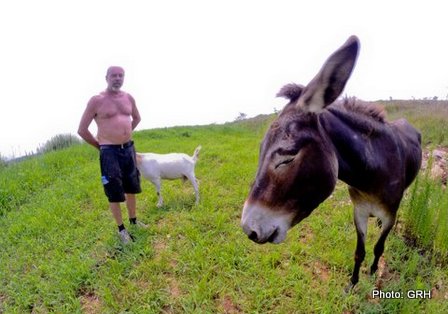
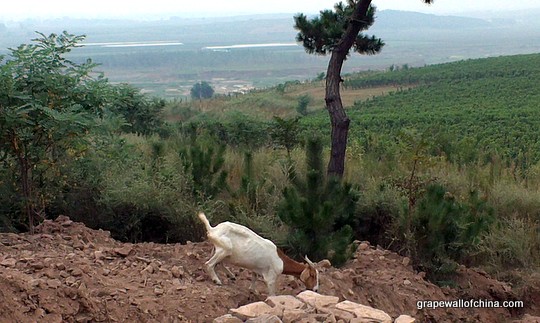
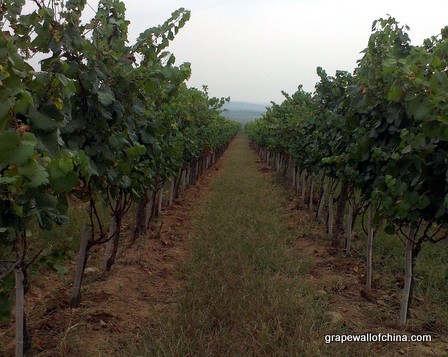
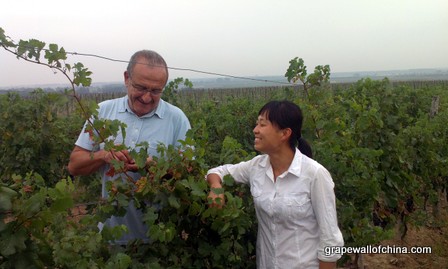
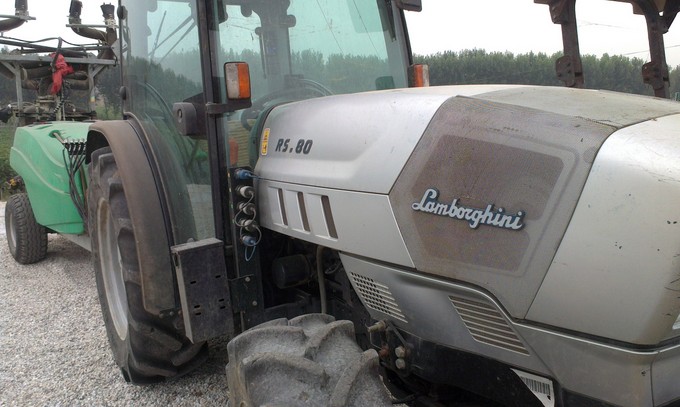
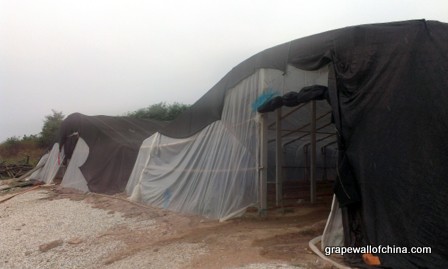
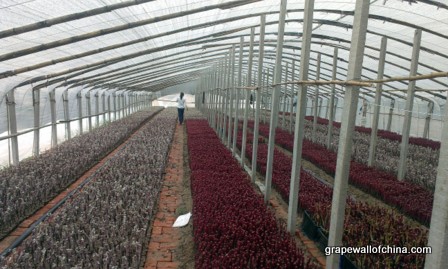
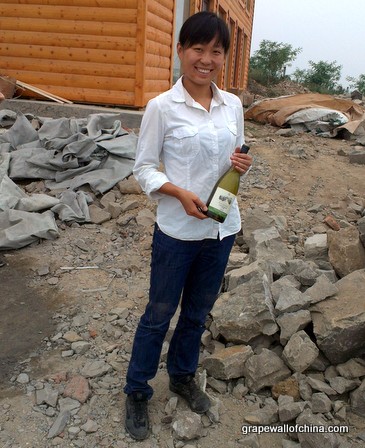
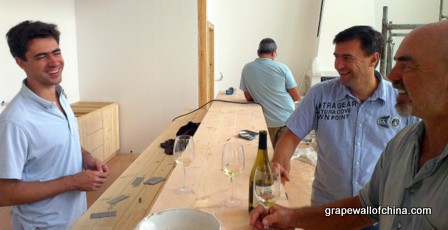
[Get the Grape Wall newsletter. Click here for a sample. Click here to join. Follow Grape Wall on Twitter here.]
Grape Wall has no sponsors of advertisers: if you find the content and projects like World Marselan Day worthwhile, please help cover the costs via PayPal, WeChat or Alipay.
Sign up for the free Grape Wall newsletter here. Follow Grape Wall on LinkedIn, Instagram, Facebook and Twitter. And contact Grape Wall via grapewallofchina (at) gmail.com.

Leave a Reply
You must be logged in to post a comment.